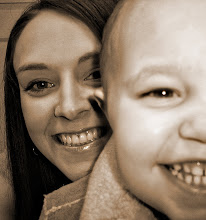
 CT, otherwise known as Computed tomography is a medical imaging method created by computer processing. It is used to create a 3D image of the inside of an object. Usage of CT has increased dramatically over the last number of years with an estimated 72 million scans performed in the United States. The CT is used to take images of the head, chest, heart, abdomen and extremities. An advantage to CT is that it almost completely eliminates the superimposition of images, distinguishes the difference between tissues that differ in physical density by less than 1% and finally, images can be viewed in the axial, coronal or sagital plane from one procedure. A disadvantage is the CT produces a moderate to high radiation technique and gives out more radiation then the normal radiograph. So, unless medically necessary, a CT usually isn't ordered by the Dr. unless it absolutely needs to be done.
CT, otherwise known as Computed tomography is a medical imaging method created by computer processing. It is used to create a 3D image of the inside of an object. Usage of CT has increased dramatically over the last number of years with an estimated 72 million scans performed in the United States. The CT is used to take images of the head, chest, heart, abdomen and extremities. An advantage to CT is that it almost completely eliminates the superimposition of images, distinguishes the difference between tissues that differ in physical density by less than 1% and finally, images can be viewed in the axial, coronal or sagital plane from one procedure. A disadvantage is the CT produces a moderate to high radiation technique and gives out more radiation then the normal radiograph. So, unless medically necessary, a CT usually isn't ordered by the Dr. unless it absolutely needs to be done.
 MRI or magnetic resonance imaging is used to visualize detailed internal structures limited to the function of the body. A MRI provides a greater contrast between the different soft tissues of the body than a CT. A MRI makes neurological, musculoskeletal, cardiovasuclar and oncological imaging very useful. A positive thing about MRI is that it uses no ionizing radiation, but uses a powerful magnetic field to align hydrogen atoms in the water in the body.
MRI or magnetic resonance imaging is used to visualize detailed internal structures limited to the function of the body. A MRI provides a greater contrast between the different soft tissues of the body than a CT. A MRI makes neurological, musculoskeletal, cardiovasuclar and oncological imaging very useful. A positive thing about MRI is that it uses no ionizing radiation, but uses a powerful magnetic field to align hydrogen atoms in the water in the body.Both MRI and CT scans are performed similarly. Depending on the body part being imaged the patient might or might not have to change into a gown. Once changed, they are laid down on a table that slides through a large doughnut or tube. The patient is advised to hold very still during the procedure to avoid blurring of images. The patient will follow any of the techs advise, for example, take a deep breath or hold still. The average exam can take from 15 to 60 minutes. Once complete, the patient will change into their street clothes and their doctor will contact them about any information found.


No comments:
Post a Comment